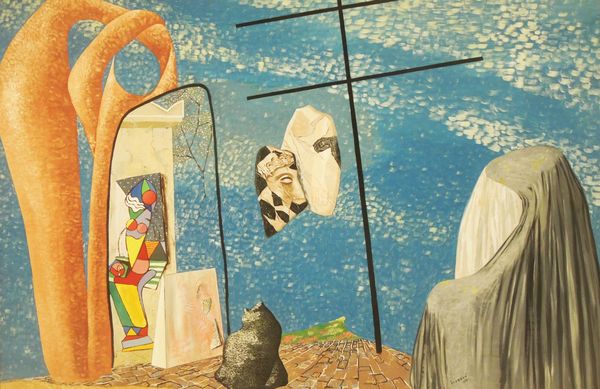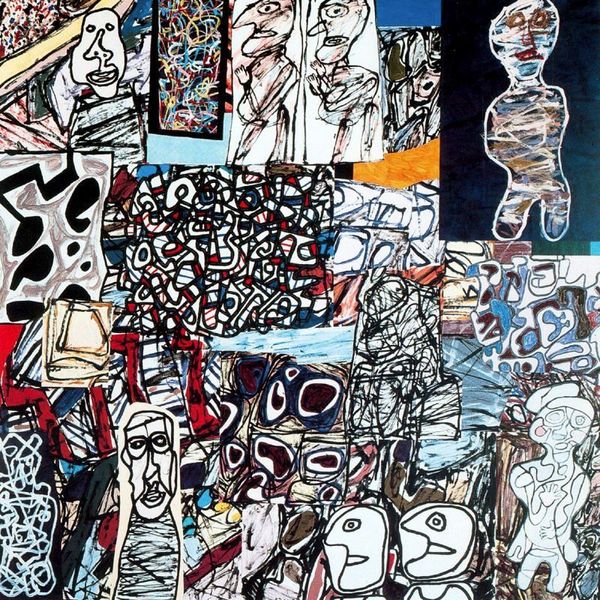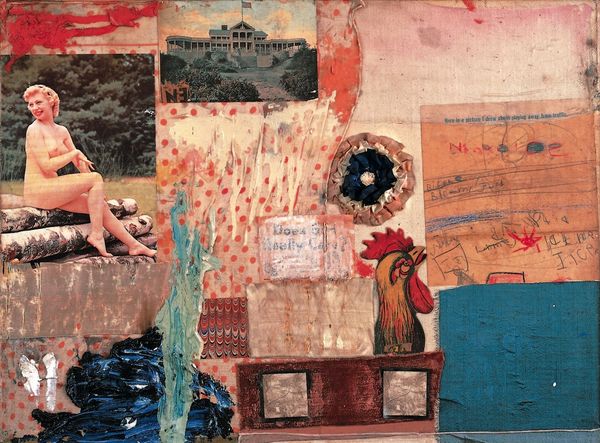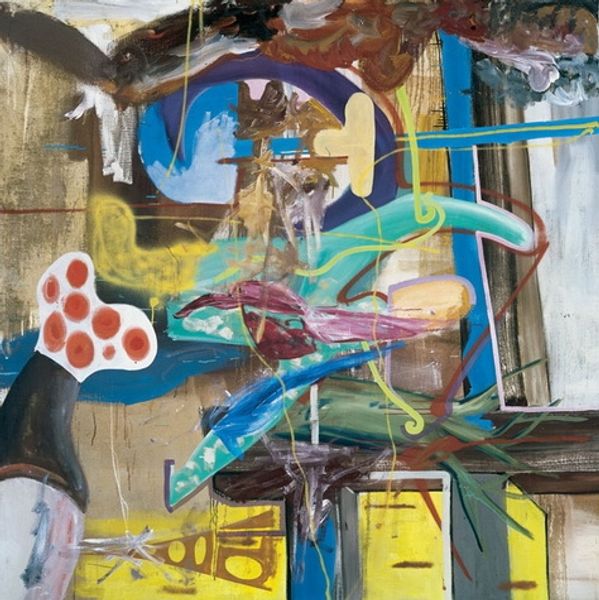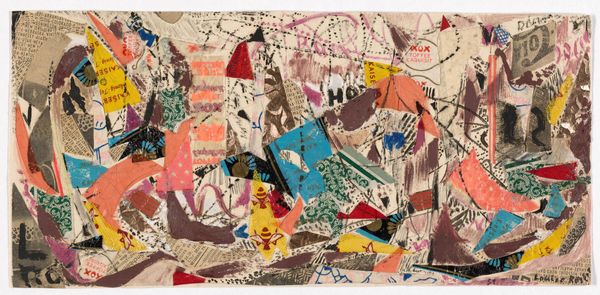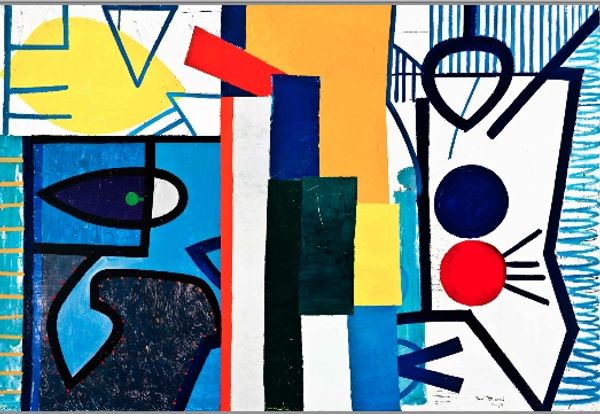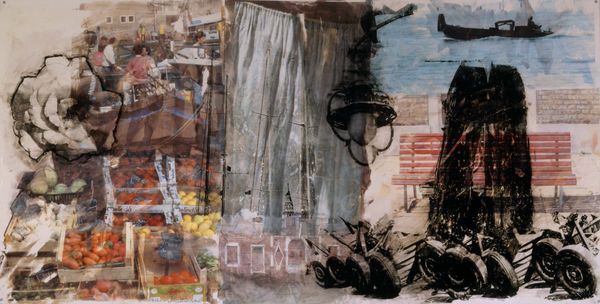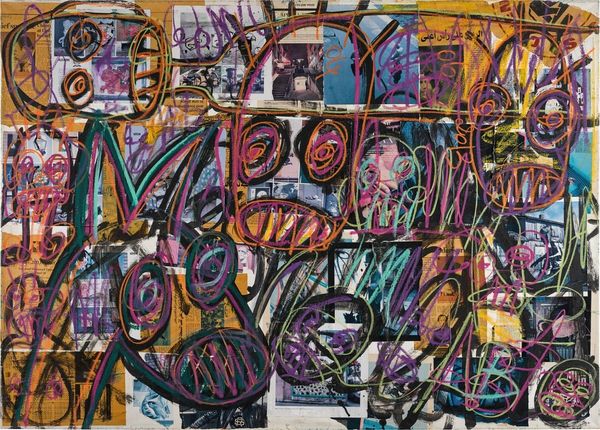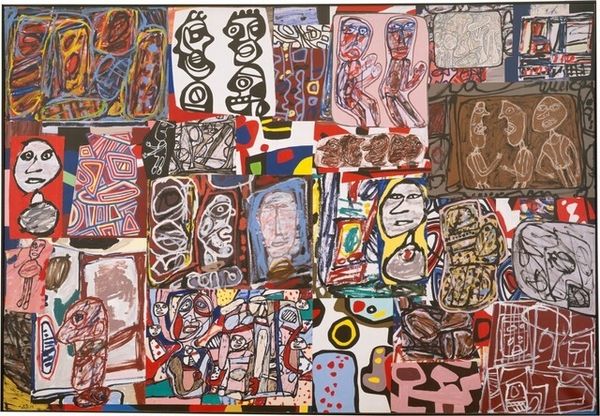
mixed-media, painting, textile
#
mixed-media
#
painting
#
graffiti art
#
street art
#
textile
#
folk art
#
mural art
#
folk-art
#
naive art
#
painting art
Dimensions: 60 x 80 cm
Copyright: Małgorzata Serwatka,Fair Use
Curator: Let’s turn our attention to "Hole in the Workshop," a mixed-media piece created by Małgorzata Serwatka in 2011. Editor: It has a naive, folk-art quality. I see various art styles mashed together – a vibrant, almost chaotic feel. The colors and textures feel really immediate and almost childlike. Curator: It’s interesting you say “chaotic”. Serwatka's practice often blurs the line between high art and craft by utilizing textile elements and naive art aesthetics. She calls into question traditional workshop settings and gendered labour through incorporating found and constructed materials into the painting, playing with traditional artistic methods. Editor: So the materiality speaks to a broader conversation about who gets to make art and with what tools? The use of, say, textiles as a medium disrupts the traditional hierarchy of "fine art" versus "craft." I wonder how her access to certain materials and artistic training shaped this final outcome? Curator: Precisely. Consider also the setting—this "workshop." What is being produced here, and by whom? Are these tools of art, or objects of everyday life? Serwatka deliberately conflates them. It’s like a stage set or a mural on a public wall, democratising access to art. This pushes at how the reception of art depends on its place in culture. Editor: Absolutely, and the folksy nature lends itself to populist interpretations. It’s like Serwatka's deliberately flattening the artistic hierarchies—mixing highbrow painting with the accessible language of folk art. It feels inherently political. Curator: Exactly. Serwatka places painting and textiles on the same level as, say, mural art which might also democratise visuality in this setting, questioning both artistic expression, production methods, and audience reception. Editor: Thinking about the title again "Hole in the Workshop", what does it imply? An inadequacy? An entrance to something else? This title shifts it towards this interesting dialogue that is based on the space. Curator: It’s left open. Holes reveal and conceal at the same time. We can appreciate the artist’s challenge to social convention, through both material subversion and questioning how spaces influence our concept of the role of the artist. Editor: Yes. I will carry that open question with me, the role of making and access. Thanks for this insight into Serwatka’s compelling perspective.
Comments
No comments
Be the first to comment and join the conversation on the ultimate creative platform.

